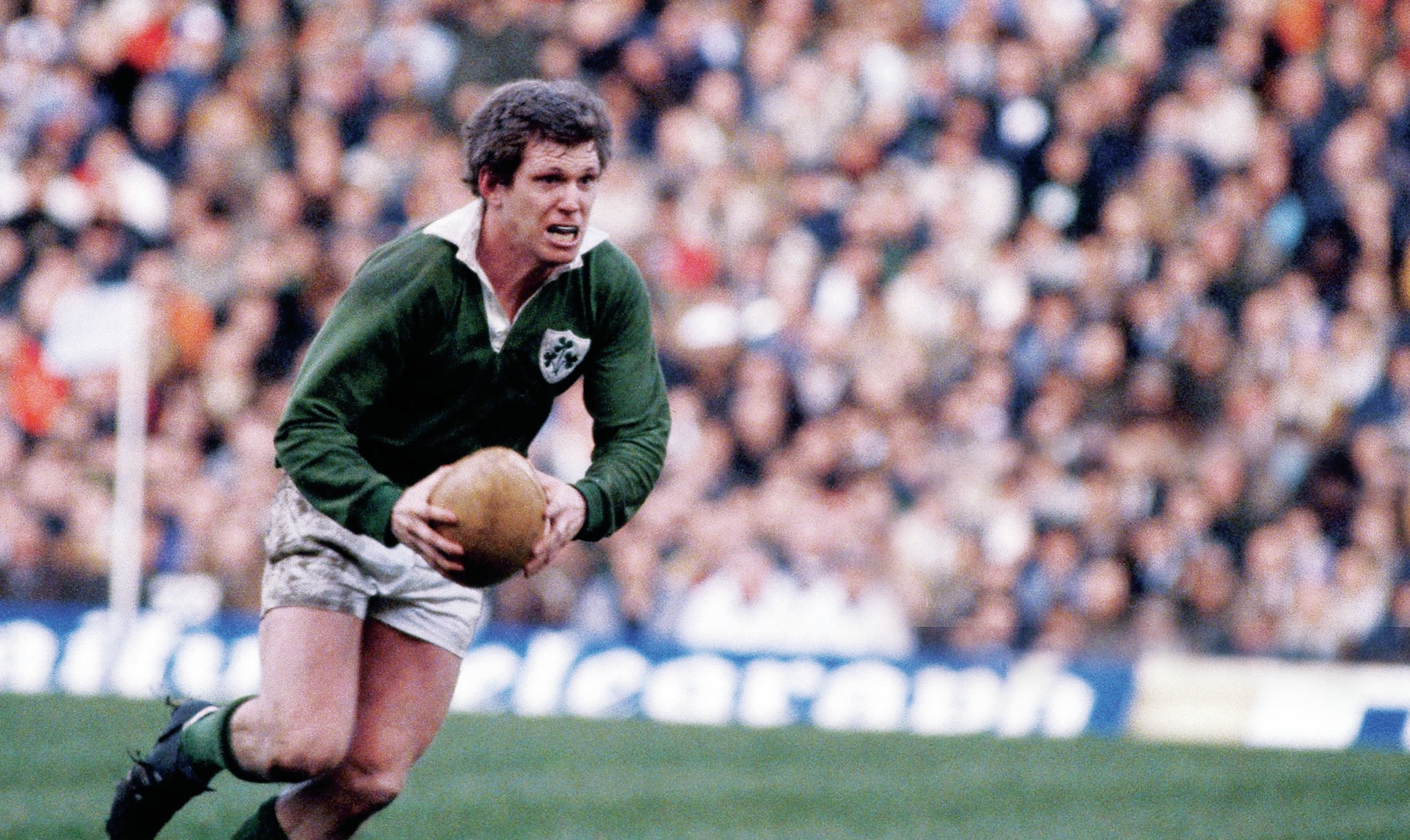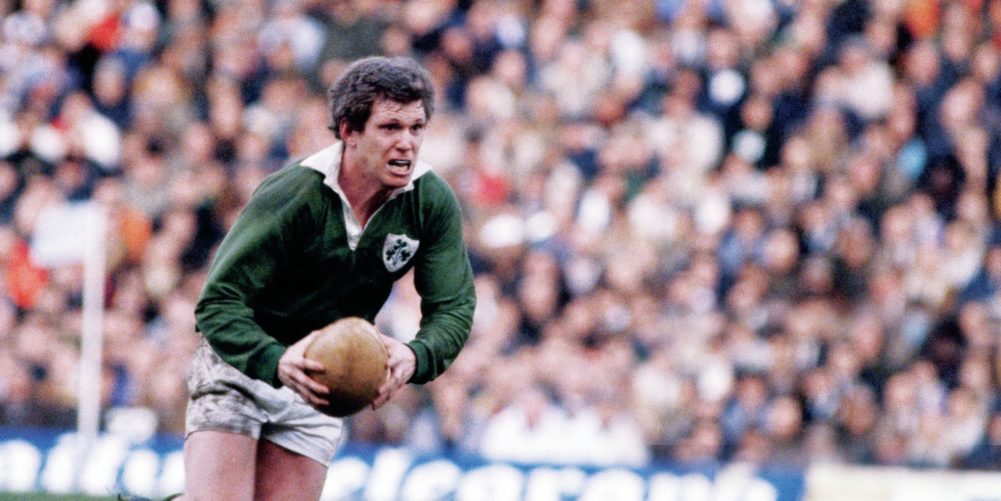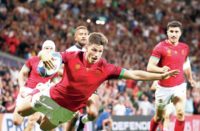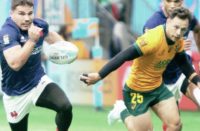Brendan Gallagher delves into some of rugby's most enduring images, their story and why they are still so impactful

What's happening here?
It's February 6, 1982 and veteran Irish warhorse Fergus Slattery is taking it to England at Twickenham in Ireland's second match of that season's Five Nations Championship. The flanker has a firm grip of the slippery-looking leather ball in two hands and is scanning upfield looking either for space or contact. He was equally comfortable with both.
The story behind the picture?
For 12 years, since his Ireland debut against South Africa in 1970, Slattery had been one of the best openside flankers in the world. A tireless tearaway, he combined physicality, skill, attitude and extreme pace.
As a young UCD student he made the 1971 Lions tour party and proved a big success although he could not dislodge John Taylor from the Test team. But three years later, on the mainly hard grounds of South Africa, he reigned supreme, a member of one of the greatest ever back rows alongside Mervyn Davies and Roger Uttley.
Work commitments in the property business – players had to earn a living back then – meant he was unavailable for the 1977 and 1980 tours. Throughout that time, though, he played for Ireland, always a stand-out, but never a winner of titles. Between 1970 and 1981 Slattery could look back on just one shared title – the famous five-way tie of 1973 when, if retrospectively, we adopted points difference Wales would have won. The Blackrock flanker's year should have come in 1972 but after Ireland had notched away wins against France and England, Wales and Scotland declined to play in Dublin on account of the escalating ‘Troubles'.
In 1981 he captained Ireland to a wooden spoon and whitewash in the Championship and by 1982 time was running out for Slattery. Under new skipper Ciaran Fitzgerald, Ireland were building a stronger team with exciting backs like Trevor Ringland, Hugo McNeil and Paul Dean with a world class goalkicker in Ollie Campbell and a gnarly no nonsense pack.
What happened next?
Ireland opened the 1982 tournament with an impressive win over the Welsh in Dublin, coming back from a 9-8 halftime deficit to win 20-12 with Moss Finn scoring a brace of tries and one for Ringland. Suddenly there was hope.
Ireland marched on Twickenham where nobody was quite certain what kind of England team they would encounter. England had fired fitfully since their Grand Slam two years earlier, the pack wasn't quite so dominating, but they were still a team to reckon with.
On the day Slattery, finding a young gun in Peter Winterbottom up against him, rolled back the years. It was all Ireland with a 16-15 score line not reflecting their superiority. Hugo McNeil nipped down the blindside from a scrum five to score their first try while prop Ginger McLoughlin, with half the Ireland pack propelling him forward, finished off a fine piece of interplay with a try that has been immortalised over the years. Suddenly the Triple Crown was on, perhaps even the Grand Slam.
Why is the picture iconic?
Slattery remains one of the greats, the flanker we all copied as youngsters, the seven with the most complete game. He could do all the muscular and dark arts stuff, never took a backward step, but was also possibly the quickest openside the game has seen. On the Lions tour of 1974 he would be neck and neck with Commonwealth Games 100m contender JJ Williams during the long training shuttles down the length of the pitch.
He was quite elusive photographically– he shows up much more prominently in actual match footage. This image, though, works very well. For all his tackling and grunt it is his ball-in-hand skills I remember most and his ease in possession. This could be a Test centre or full-back plotting his next move. Perfect balance, concentration and note the look on his face.
Slattery was the epitome of ‘all action' but very clever with it. My school coach instructed me to watch only Slattery in one international at Twickenham and report back. For ten minutes he would run himself ragged, perpetual motion, and then he would rest for 30 seconds or a minute. Just wouldn't get up for the next ruck or maul. He would let the next play move on without him. Having quickly recharged the batteries he would again run amok for another ten minutes. And then crash for another 30 seconds or so. And repeat. Everything at 100 per cent.
Footnote: Two weeks later Ireland clinched the Triple Crown, their first since 1949, with a 21-12 win over Scotland in Dublin, the Sainted Campbell kicking six penalties and a dropped goal. Slattery had finally won something tangible in Ireland colours.
Alas for Ireland there was now a month's wait before their Grand Slam decider against France in Paris, the French having lost all their three games up to this point. A month was a long time in the old amateur days with a Triple Crown to celebrate in Dublin, Limerick, Belfast and all points west and Ireland didn't give a great account of themselves in Dublin, losing 22-9. No Slam but the Championship was theirs nonetheless, so the partying continued.


























